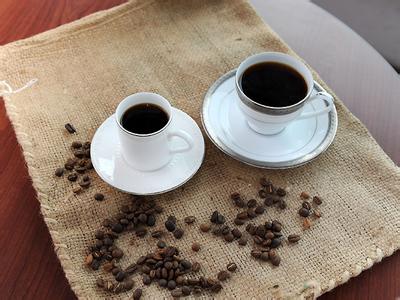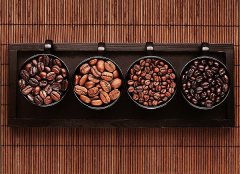Serious divergence in commodity investment returns Coffee led the rise and crude oil led the decline
There was a serious divergence in investment returns on commodities in 2014, with coffee prices rising sharply over the year as a whole, while crude oil prices began to fall sharply in the second half of the year after hitting new highs in the first half of the year. As of December 24, the price of crude oil has fallen by more than 40% compared with the price at the beginning of the year.

Across the commodity market, crude oil led the decline, while cotton, fuel oil and iron ore also fell sharply, with big gains in coffee, platinum, live livestock and raw sugar.
Whether it is crude oil or coffee, the relationship between supply and demand is a key factor affecting commodity prices. Since the beginning of this year, Brazil, the world's largest exporter of coffee beans, has been affected by a drought rarely seen in decades, and a number of agencies expect the Brazilian coffee bean harvest to hit a three-year low, causing coffee prices to rise as a result of falling supply. it has become a rare variety of high-return investment among commodities.
The decline began after crude oil prices hit a new high at the end of June. The decision of the Organization of Petroleum Exporting countries (OPEC) not to cut production at the end of November and maintain crude oil production at 30 million b / d accelerated the volatility of the crude oil market, causing crude oil prices to fall by more than 20 per cent in just half a month.
In addition to no reduction in OPEC production and a stronger dollar, international oil prices below $60 are also driven by a sharp increase in US shale production, a price war among oil-producing countries, weak global demand for crude oil and a retreat from geopolitical risks.
The impact of OPEC's refusal to cut production accelerated the outflow of money from the crude oil market. According to agency estimates, since June, the outflow of funds from the international crude oil market has been close to 20 billion US dollars.
The slowdown in the global economy has led to a decline in demand for crude oil and has been putting pressure on crude oil prices. The International Energy Agency (IEA) recently cut the increase in global oil demand by 230000 b / d to 900000 b / d in its monthly oil market report, the fourth time in five months that the IEA has lowered its 2015 outlook.
The price of crude oil still doesn't look good in 2015. IEA believes that oil inventories in OPEC countries could reach record levels by mid-2015, while crude oil production outside OPEC will increase by 1.3 million b / d to 57.8 million b / d.
As the last bastion of commodities, the decline in the crude oil market directly led to the decline in the prices of many commodities. The prices of commodities such as gold, iron ore and base metals have all declined recently. The Thomson Reuters / Core Commodities CRB index, which includes 19 commodities including food, energy and metals, has fallen sharply since the end of June.
However, the bottom of crude oil appears to be forming, with Soci é t é G é n é rale forecasting an average price of $70 a barrel for Brent in 2015.
Meanwhile, figures released by the commerce department on Tuesday showed that us final GDP grew at an annualised rate of 5.0 per cent in the third quarter, better than expected at an annualised rate of 4.3 per cent and the best growth in 11 years, with a previous increase of 3.9 per cent.
After the release of the US data, the dollar index rose strongly and quickly broke through 90, and the strong rise of the dollar also raised concerns about the price of commodities denominated in dollars.
As far as the precious metals market is concerned, strong US data spurred a surge in US stock markets, but gold and silver prices continued to fall, while base metals such as copper and nickel continued to weaken. In terms of precious metals' performance so far this year, after a sustained slump in 2013, gold prices were tepid in 2014 and were roughly flat at the end of the year than at the beginning of the year.
Important Notice :
前街咖啡 FrontStreet Coffee has moved to new addredd:
FrontStreet Coffee Address: 315,Donghua East Road,GuangZhou
Tel:020 38364473
- Prev

With the global warming, the production of boutique coffee may be reduced.
Half of the arable land needed to produce coffee will disappear by 2050. This is the result of a new research model that assesses how climate change will change the conditions under which coffee beans grow, such as temperature and rainfall. The researchers first acquired Arabica Coffee (coffeaarabica) and Robusta Coffee (coffea), the two main coffee species currently used in the world.
- Next

Korean coffee brand COFFEA COFFEE landed in Kunming
Korean coffee brand COFFEA COFFEE Kunming media tasting meeting Korean coffee brand COFFEA COFFEE Kunming media tasting meeting Korean coffee brand COFFEA COFFEE Kunming media tasting conference Yunnan (Reporter he Yanjie) Korean professional coffee brand COFFEA held a media tasting meeting in Xishan Wanda Square on the 22nd of this month, on the same day Aeropress barista contest champion Mr.Q came in person.
Related
- Why are the coffee in some coffee shops not enough after being frozen? What should I make up for my American latte cappuccino coffee after being frozen?
- How much water does it take to steam coffee by hand? Why is the coffee brewing and steaming time 30 seconds? What is the purpose of steaming coffee?
- The suspected drink contains too much caffeine! Overlord Tea Lady responds urgently!
- Starbucks rejects antique paper coupons?! Netizen: Missed marketing opportunities!
- What ratio of water temperature and ground does the smart cup method use to press coffee? The difference between brewed coffee and filtered coffee?
- What is the standard process for the purpose of coffee cup testing? What is the difference between hand-brewed coffee and cup testing?
- How to use hand-brewed coffee paragon small golden balls? How does cold coffee lock in the aroma of coffee?
- Is American coffee black? What is the difference between American coffee and drip coffee?
- Unexpected! Well-known tea beverage brand Lele Tea will withdraw from the Zhengzhou market!
- Starbucks enters the fashion and beauty industry?! Netizen: Give me an ice American eye cream

